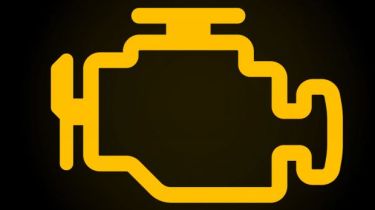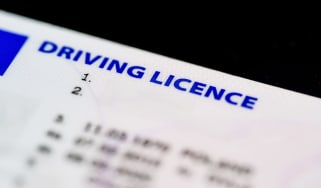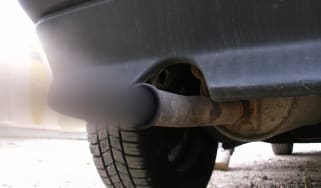Engine management light: top 5 causes of amber engine warning light
An amber engine warning light isn’t always serious – here are the most common causes of an ‘EML’

An unexpected engine management light (EML) is a worrying sight for any driver. It's an amber dashboard symbol that signifies that an issue has been detected by the car's sensors related to the engine. This warning, universal across most petrol, diesel, hybrid, and electric cars, aims to alert drivers early to prevent further damage to the engine.
Sometimes called the 'check engine' or 'engine warning light’, it usually requires immediate attention from a professional to diagnose and fix the issue, although it’s possible that it will reset automatically. In some cases, the car may also enter into a 'limp mode' to protect the engine, limiting the performance available, but allowing the driver to get to a garage, safe place or get home safely.
 My car won’t start: why, what you can do and troubleshooting
My car won’t start: why, what you can do and troubleshooting
While there are many issues that can trigger an engine management light, we have covered the most common causes in this article, as well as some frequently asked questions. Check out our guide to dealing with limp mode and explore our list of the most reliable cars if you’re looking for a model that you can depend on.
What is an engine management light?
The engine management light (EML) is a small symbol that will illuminate on the dashboard when there is a fault with the car. It appears as a stylised engine block and will usually glow amber, although it can glow red if there is a more serious issue. It can flash or illuminate continuously, but both indicate that the engine isn’t running correctly Some older cars may display a ‘check engine’ message instead.
Unlike other warning lights, such as the coolant temperature warning or low oil level warning lights, the EML doesn’t signify one specific issue with the car. Instead, it’s a general warning that something is wrong with the engine, with several potential causes.
In most cases, the car will need to be connected to diagnostic equipment to determine the fault – most service centres and breakdown service providers can do this. Some older cars might flash the ‘check engine’ warning a specific number of times, with the number of flashes referring to an error code which can be found in the car’s manual to tell you what’s wrong.
Top 5 causes of an engine management light
The list of possible triggers for an EML is a long one, but here are five of the most frequent causes:
1. Emissions system fault
One of the most common causes of an EML is an issue with the car’s emissions system, which uses a series of sensors to ensure the system is operating correctly.
One key component is the oxygen sensor, with many cars having more than one. This measures the amount of unburnt oxygen passing through the exhaust of the car, which can indicate whether the engine is burning too much or too little fuel, known as running ‘rich’ or ‘lean’ respectively.
An EML triggered by the oxygen sensor can mean the car is running too rich or too lean, or can be caused by a fault with the sensor itself. To put this fault right may involve the reprogramming or recalibration of the engine control unit (ECU) or, sometimes, the replacement of the oxygen sensor.
2. Blocked diesel particulate filter or differential pressure sensor fault
These issues are exclusive to diesel cars and will trigger an EML or, in some cases, a dedicated diesel particulate filter (DPF) warning light. The latter can also trigger if the car detects a fault with the differential pressure sensor (DPS), which determines how effectively the DPF is performing.
The DPF is designed to remove carcinogenic particles from the exhaust fumes. These particles take the form of a sooty deposit, and over time the filter can become clogged, making it difficult for the exhaust gases to pass through. When the DPS determines this point has almost been reached, the engine begins a process called DPF regeneration.
This involves extra fuel being burnt by the car in order to increase the temperature of the DPF. When it gets hot enough, the particulates are burned and pass harmlessly through the exhaust as fine ash, unclogging the DPF.
If you only use your diesel car for short journeys, it is likely that your DPF will never reach a high enough temperature for the regeneration process to occur. The DPF will remain clogged and can trigger the EML. If you own a diesel car that you typically only use for short trips, we recommend taking your car out for longer drives as and when possible to avoid this type of issue developing – or swapping to a car that runs on petrol or electricity.
However, a faulty differential pressure sensor can also create the same symptoms. If it’s producing an incorrect reading – or none at all – the car doesn’t accurately know how full the car’s DPF is. It can then sometimes trigger a low-power (or limp-mode) mode to avoid the risk of damage until the fault can be investigated.
If you suspect your diesel car has a blocked DPF filter or a faulty DPS, take it to a service centre where the issue can be investigated and resolved.
3. Mass airflow sensor
The mass airflow sensor (MAF) – sometimes referred to as the air mass sensor or mass flow sensor – is vital for the efficient running of an engine. It lets the car’s computer know how much oxygen is entering the engine, so it can calculate the correct amount of fuel to add.
If the MAF fails or provides inaccurate data, the car’s computer has to guess how much fuel to add, and an EML will illuminate. The car will continue to run, but it may enter ‘limp mode’, reducing engine power.
The mass airflow sensor is mounted towards the top of the engine, where it’s in the path of air that has just passed through the engine’s air filter. An incorrectly installed (or missing) air filter can damage the sensor by allowing harmful particles to make contact with it.
Alternatively, a clogged air filter not letting enough air through will trigger a warning that the engine is being forced to run ‘rich’. Whether the signal given by the mass airflow sensor is missing or outside normal parameters, the effect will be the same – an engine warning light.
4. Ignition system fault
Not to be confused with the ignition key or ignition switch, the ignition system is responsible for burning the fuel that makes an engine run. An EML will trigger if one of its components fails.
In a petrol car, a mixture of fuel and air is ignited by a spark plug, generating power to turn the wheels. The spark plugs need a very high voltage to create a spark, provided by one or more ‘coils’ – usually one per cylinder. If a spark plug or coil develops a fault, the fuel in that cylinder won’t burn effectively, resulting in a rough or ‘misfiring’ engine. It can also cause damage to your exhaust system’s catalytic converter. Your car’s computer can detect this and will trigger an EML. It’s usually a fairly simple fix, with either the faulty spark plug, coil or associated wiring needing to be replaced.

Diesel cars don’t need spark plugs to run, but instead use glow plugs to warm the combustion chambers before starting on a cold day. A dedicated glow plug warning light (usually a swirling line, resembling an insect with antennae) will illuminate if there is an issue with the ignition system in a diesel car.
5. Loose petrol or diesel filler cap
If your car’s EML has illuminated, and there are no obvious signs that something is wrong with the engine, the fuel cap could be the culprit and it only takes a moment to check.
Your car’s fuel tank is a complex, pressurised system that allows metered amounts of air from outside to replace the fuel as it’s pumped out of the tank to the engine. Air is allowed into the tank based on readings from a fuel tank air-pressure sensor, which is able to account for things like temperature that can also have an effect on the air pressure in the tank. If the fuel tank pressure sensor is unable to provide an accurate reading, it’ll usually trigger an EML.
However, the readings from the sensor can only be reliable if the fuel tank system is 100% pressure tight, with air only permitted to enter and leave the tank through the controlled vents. One common cause of an air leak into – or out of – the petrol tank, is through a fuel filler cap that hasn’t properly sealed. Check to make sure it’s seated correctly, or whether the cap itself is broken.
This is one of the cheapest-to-fix faults that can possibly trigger an EML, with a replacement fuel filler cap often typically costing around £10.
Car technology made simple
- Car lights and headlights: complete guide
- Car cameras: how cameras are making cars safer
- Dash cams: what are they and how do they work?
- What is cruise control and adaptive cruise control?
- Electronic handbrakes and Auto-hold: a complete guide
- What is a car immobiliser and does my car have one?
- What is Alcantara?
- What is kerbweight?
- What is a space saver wheel?
- What is regenerative braking?
- What is gross vehicle weight?
- What is bluetooth?
- What is a head gasket?
- What are spark plugs and glow plugs?
- What are brake pads and discs?
- What is a supercharger?
- What is lumbar support?
- What is a car’s exhaust system and what can go wrong?
- What is air suspension, and how does it work?
- What are adaptive dampers, and how do they work?
- What is keyless entry and keyless start?
- eCall explained
- What is a head-up display?
- What is Waze?
- What is Mirrorlink?
- What is what3words?
Recommended

Speed limits in the UK: everything you need to know

What does SORN mean? Statutory Off Road Notification explained

How do I renew my driving licence or change the address?

What is a Diesel Particulate Filter? Guide to DPFs and how to look after them
Most Popular

New Cupra Formentor gets an angry facelift for 2024

Best new car deals 2024: this week’s top car offers

The best cheap fun cars from under £5k to over £10k
Tips & advice








